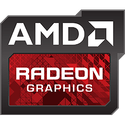
AMD Withholds Radeon RX 7600 XT Launch in China Amid Strong RX 6750 GRE Sales
According to the latest round of reports, AMD has decided not to include China in the initial global launch of its upcoming Radeon RX 7600 XT graphics card. The RX 7600 XT, featuring 16 GB of memory and based on AMD's next-generation RDNA 3 architecture, was expected to launch soon at a price of around $300. However, the company is currently re-evaluating its Chinese GPU launch strategy due to the runaway success of its existing Radeon RX 6750 Golden Rabbit Edition (GRE) series in the region. The RX 6750 GRE cards with 10 GB and 12 GB configurations retail between $269-$289 in China, offering exceptional value compared to rival NVIDIA RTX models. AMD seems hesitant to risk undercutting sales of its popular RX 6750 GPUs by launching the newer 7600 XT.
While the RX 7600 XT promises more raw performance thanks to advanced RDNA 3 architecture, 6750 GRE, with its RDNA 2 design, seemingly remains efficient enough for most Chinese mainstream gamers. With the RX 6750 GRE still selling strongly in China, AMD has postponed the RX 7600 XT introduction for this key market. Final launch timelines for the 7600 XT in China and globally remain unconfirmed by AMD at time of writing. The company appears to be treading cautiously amidst the shifting competitive landscape.
While the RX 7600 XT promises more raw performance thanks to advanced RDNA 3 architecture, 6750 GRE, with its RDNA 2 design, seemingly remains efficient enough for most Chinese mainstream gamers. With the RX 6750 GRE still selling strongly in China, AMD has postponed the RX 7600 XT introduction for this key market. Final launch timelines for the 7600 XT in China and globally remain unconfirmed by AMD at time of writing. The company appears to be treading cautiously amidst the shifting competitive landscape.












































